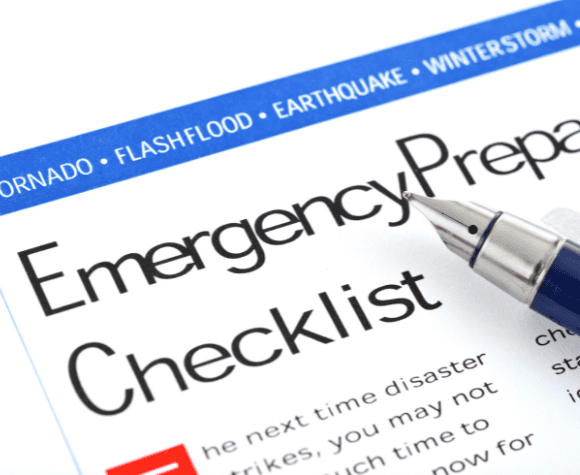National Preparedness Month: A Guide to Personal and Home Readiness
 September is National Preparedness Month, a time dedicated to raising awareness about the importance of preparing for disasters and emergencies. Whether it’s a natural disaster like wildfire, hurricane, earthquake or an unexpected event like a power outage, being prepared can make all the difference. Our focus today is on personal and home preparedness – ensuring individuals and families have the tools, plans and knowledge they need to stay safe.
September is National Preparedness Month, a time dedicated to raising awareness about the importance of preparing for disasters and emergencies. Whether it’s a natural disaster like wildfire, hurricane, earthquake or an unexpected event like a power outage, being prepared can make all the difference. Our focus today is on personal and home preparedness – ensuring individuals and families have the tools, plans and knowledge they need to stay safe.
Why Preparedness Matters
Emergencies often happen without warning, leaving little time to react. A well-thought-out preparedness plan:
- Reduces fear and anxiety
- Minimizes the impact of disasters
- Saves lives and property
- Helps communities recover more quickly
Being prepared can be boiled down to 4 steps:
Step 1: Make a Plan
Start by developing a simple, actionable emergency plan that fits your family’s specific needs. It’s a good idea to practice your plan at least twice a year.
Key Elements to Include:
- Communication Plan: How will you contact loved ones? Where will you meet if separated?
- Evacuation Routes: Know multiple ways to leave your home and neighborhood.
- Assembly Points: Determine areas on your property where your family will meet up.
- Shelter-in-Place Plan: Understand how to stay safe at home during events like severe storms or chemical spills.
- Special Needs: Include pets, seniors, infants, and individuals with disabilities in your planning.
Step 2: Build an Emergency Kit
An emergency kit should contain enough supplies to sustain your household for at least 72 hours. Store items in a portable container or backpack for easy transport.
Basic Kit Items:
- Water (1 gallon per person per day)
- Non-perishable food
- Flashlights and extra batteries
- First aid kit
- Medications and medical supplies
- Battery-powered or hand-crank radio
- Phone chargers and backup power banks
- Hygiene items (handi-wipes, toilet paper, soap, hand sanitizer)
- Important documents (in a waterproof container)
Additional Items to Consider: Masks, cash, pet food, copies of insurance cards, and maps.
Step 3: Stay Informed
Information is your most powerful tool during an emergency. Stay updated with:
- CODE RED Notification System: https://public.coderedweb.com/CNE/en-US/1FED0DDEEC23
- NOAA Weather Radio for severe weather alerts
- FEMA app for national emergency updates and tips
- Local news apps
Step 4: Prepare Your Home
Your home is your first line of defense in many emergencies. Take steps to make it safer:
- Install smoke and carbon monoxide detectors (test monthly)
- Secure heavy furniture and appliances
- Check your insurance policies (consider flood or earthquake insurance if applicable)
- Create defensible space if you live in wildfire-prone areas
- Know how to shut off utilities like gas, water, and electricity
Final Thoughts
Preparedness doesn’t happen overnight. Start small – build your kit, talk with your family, and make a plan. Each step you take now helps ensure that when an emergency strikes, you’re ready to face it with confidence.
This National Preparedness Month, commit to protecting what matters most – yourself, your family, and your home. The month culminates on September 30th – National Preparedness Day, which serves as a National Day of Action to reinforce preparedness efforts.
